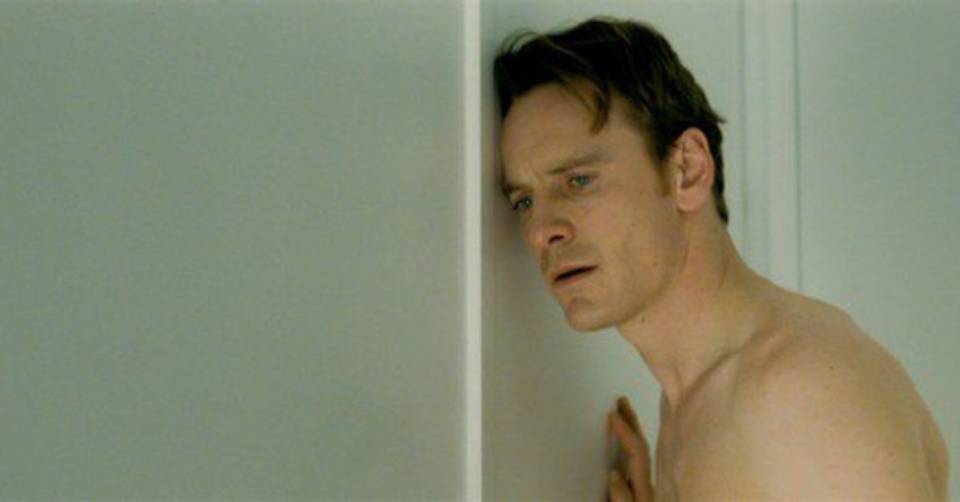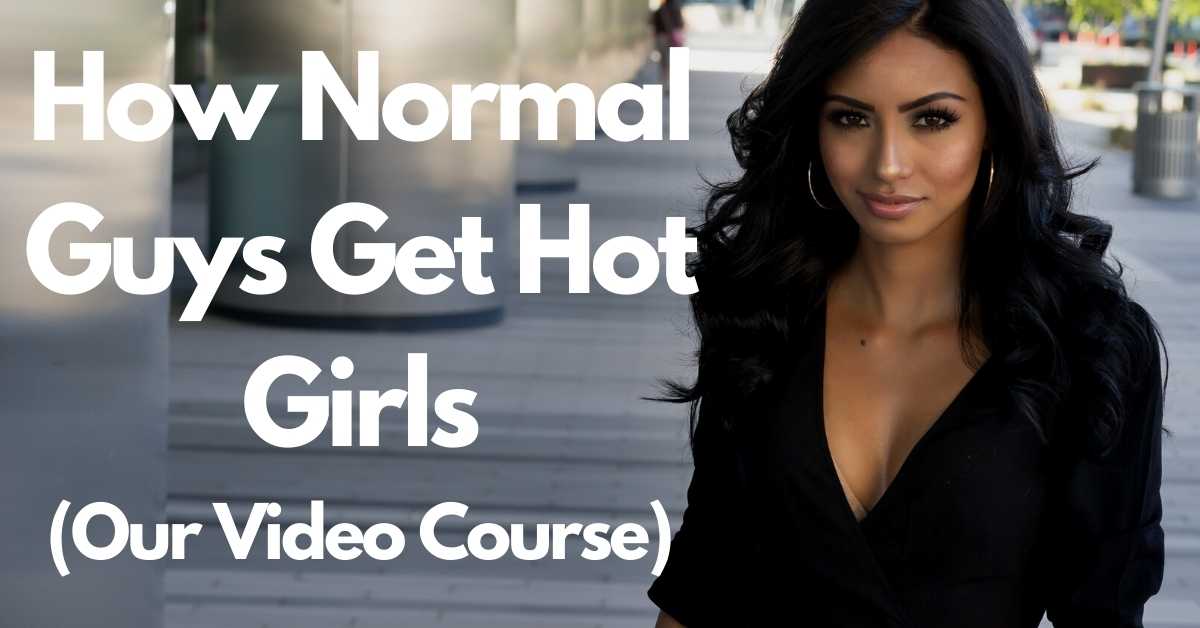In today's fast-paced world of Tinder and speed-dating, flirting has become something of a lost art.
Just because times have changed, however, doesn't mean human biology has. Touch is one of the most basic ways to show affection and sexual interest. In fact, research shows that even casual intimate touching offers numerous health benefits. Including a lower heart rate, decreased blood pressure, reduced stress levels, and a boost in the feel-good chemical oxytocin.
So what does this mean for improving your relationship and enjoying a better sex life? If you want to show a woman you're confident and interested in her, touch is the way to do it.
Apps Dating Experts Recommend to Men Who Aren't Good With Women
Whether it's your first real relationship or you have a string in your past there are a few apps that dating experts recommend consistently. These are apps where you can meet great girls that want something long-term as well as those just looking to keep it casual:
| Site | Our Experience | Our Rating | Free Trial Link |
|---|---|---|---|
Best Hookup Site For MILFs  | Experience Highlights
| 9 | Try AFF For Free |
Best For Relationships  | Experience Highlights
| 9 | Try eHarmony |
2nd Best For Hookups  | Experience Highlights
| 8 | Try Passion |
Where To Touch A Girl To Build Attraction And Display Confidence
Intimate touching involves a lot more than just sex. It also includes cuddling. Far too many guys ignore a woman's many erogenous zones in favor of fast-forwarding right to the main event.
This can leave a girl unsatisfied and unfulfilled. But it also means missing out on some of the sexiest and most enjoyable parts of a relationship. If you want to know where to touch a girl, here are 12 parts of the body to explore. These are methods that you can use regardless of the situation, whether it be a long-time partner or someone new you just met from one of the popular hookup apps that actually work for guys.
1. Where to touch a girl to show comfort: her back
Touches on the back generally convey support or comfort, but only if done toward the upper back. Generally, women will interpret a touch on the lower back as being more sexual in nature. If you want to offer comfort or show her you care, it's best to stick to the upper back.
This might not seem like the most romantic type of touching in the world. But building a loving relationship means showing you're a supportive partner. By touching her upper back, you're showing you've literally "got her back" through thick and thin.
2. Her hands
Throughout history, touching hands with another person has been a way to show various types of intimacy. In ancient Greece, people shook hands to prove they were unarmed and could be trusted not to attack.
In modern times, holding hands usually means the people involved want to show an outward sign of their relationship. By holding a girl's hand in public, you prove that you're not afraid to broadcast your affection to the world.
This can be a pretty powerful statement. Plus she'll appreciate knowing you're confident enough in your masculinity to do a little hand-holding.
3. Where to touch a girl to turn up the heat: her neck
The neck is a tried and true erogenous zone, so you'll definitely want to show it some love. While kissing a girl is fantastic, the reality is that prolonged kissing on the lips can get a little tiresome.
You can introduce some variety—and make her toes curl—by planting some soft, gentle kisses on her neck. Pay special attention to the nape, which is a hot spot for most women.
In contrast, having a woman touch your shoulder is also pretty intimate.
4. Her arms
At first glance, the arms might not seem like a particularly sexy part of the body. However, studies that focus on sexual touching have turned up some interesting results. Just think of what it means when a woman touches your arms.
In one report, researchers from Aberdeen University discovered that two-thirds of women agreed to dance if a man touched her arm while asking.
By contrast, men who asked without touching were only successful half of the time. The study also revealed that women were more likely to give their number to men who touched their arm when asking.
5. Her legs
Women spend a lot of time on their legs. Whether it's lotioning, shaving, exfoliating, or toning, they work hard to pull off a stunning pair of stems. After all, one of the perks of being a girl is getting to wear fun and flirty skirts whenever you feel like it.
Guys can show their appreciation for all this effort by making it a point to admire a girl's legs. When you touch them, make sure to comment on their curves and tone. If your girl likes to keep her gams smooth, let her know how much you love her soft skin. Your praise and acknowledgment will not go unrewarded.
6. Where to touch a girl to make her swoon: her feet
There is no way to overstate the seductive power of a really good foot massage. Not only does a foot rub feel amazing - it lets a woman know her man truly cares about her well-being.
To give her the ultimate foot massage, surprise her with a full spa experience. Start with a relaxing soak by filling a large plastic tub with warm water and a few drops of essential oil.
From there, gently dry her feet, then get to work with a scented lotion or massage oil. When you choose an oil or lotion, peppermint is a go-to ingredient. It's soothing and invigorating, which is perfect for tired feet.
7. Where to touch a girl to show protectiveness: her waist
Studies show that women on average prefer male partners who are dominant and aggressive. Of course, this doesn't mean guys should act like cavemen or steamroll over a woman's wishes or desires.
However, there's definitely something to be said for a guy who's willing to take charge. Subtle touches can let her know you're perfectly okay with taking charge—as long as she's okay with it, too.
Touching her waist is a great way to be dominant without straying into overbearing territory. Try a playful tug of her hips to bring her closer to you on the dance floor or kissing post-date. This shows her you're interested and eager to take things to the next level.
8. Her inner thighs
When you want to show her an unmistakable sign that you're in the mood, the inner thighs have it. Touching the soft skin of her inner thighs is a great way to introduce her to edging. New to it yourself? Edging is a sexual technique in which one partner slowly brings the other to the edge of climax. Only to draw back and repeat the process. (Can you say hot?)
The idea with edging is to slowly and gradually build desire. By starting with the inner thighs, you can work your way up to more intimate areas.
9. Where to touch a girl to make her moan: behind the ear
The skin behind the ear is very thin, which makes it particularly sensitive. This area is also located close to the vagus nerve, which is one of several cranial nerves in the body.
According to scientific research, the vagus nerve plays a key role in stimulating sexual desire. This might explain why whispering "sweet nothings" in someone's ear can be such a turn-on.
10. Where to touch a girl to drive her wild during sex: the vaginal margin
The phrase "vaginal margin" might not sound all that sexy. But studies have shown that this area between the vagina and anus is a small but mighty erogenous zone.
To find it, sexual health experts say to start at the vaginal opening and then work your way down. The delicate area just before the start of her rectum is the spot you're looking for. Researchers say this part of the body is incredibly sensitive; you only need featherlight touches to make a big impact.
11. Her stomach
Not all women enjoy having their stomachs touched. If you take your time and do it correctly, however, the stomach can be a powerful erogenous zone. The lower belly and belly button areas are sexual hot spots for many people.
Showing off one's navel has been something of a taboo throughout history. That might explain why it can feel naughty to engage in sexual play that involves the belly button. Thankfully, society has started to celebrate the erotic allure of the navel, with midriff-baring clothing and navel piercings becoming popular.
You can pay homage to your girl's sexy belly button by gently tracing it with your fingertips. Or even teasing it with your tongue. Just make sure she's comfortable receiving attention in this area.
12. Her butt
The bottom is definitely an erogenous zone, and it's perfect for more adventurous types of play. If your girl enjoys being dominated in bed, you can try experimenting with some light spanking.
You can also build intimacy by sneaking a covert caress of her buns when no one else is looking. By giving her an affectionate pat or a secret squeeze, you share a special and sexy moment that's yours alone.
Knowing Where To Touch a Girl Is The Key To Bliss
The most important places to focus on when learning where to touch a girl are the places your girl loves. While you can do a lot with your hands and mouth, it's also important to use your ears. If you want to know what types of touching she prefers, ask her to tell you. Showing you want to please her can make her feel empowered and sexy, which is a win-win for you both.
Dealing with Shame Associated With Touching a Girl
Shame occurs when any of us feel inherently wrong, immoral, unworthy of our own sexuality. Shame holds us from asserting our real desires. It can come from traumatic past experiences. It could be coming from an overly strictly family upbringing or culture. It could be being emotionally or physically abused when you're young. Conquering shame requires quite a bit of introspection.
Sex is also often seen as a taboo subject in many cultures. Sexual shame is one of the biggest problems that many Asian cultures face, for example, Japanese people choosing to stay single and unmarried.
On some fundamental level, you may believe that women do not want to be hit on, that women do not like being touched. You may believe that it's wrong to touch a girl or if you’re physically assertive with a girl you’re ‘bad’. The first step to being more sexually comfortable with women is to re-orient our beliefs towards our own sexualities. You do this by first being aware of them and secondly challenging those beliefs.
I know of this one acquaintance of mine that gets laid regularly. He approaches girls aggressively right from the get go. He grabs them right from the get go and doesn’t ask for any permission. I’m standing there thinking: he’s going to fucking embarrass himself. Low behold, he eventually actually gets a couple of girls giggling and ends up kissing them.

When was the last time you saw a beautiful lady walk down the street and you wished you could to pin her against the wall and ravish her right there and then? Now, this is the truth, this entire attracting women thing is by nature polarising and controversial. Some are going to think you’re a creep and the right ones will appreciate you for taking the lead. If you need to be accepted or liked by everyone else, you’re going to be pushed around in subtle ways and not-so-subtle manners.
If you’re in a club and you are afraid of what her friends might think about you if you are sexually forthright. You have a boundary issue. You’re essentially taking responsibility for other people’s actions and emotions. You don’t have to be responsible for other people’s actions and emotions. Those are not your problems. That is a problem that nice guys face, trying to please everyone and end up not asserting themselves.
Ultimately, you’re going to have to assert yourself and you'll get rejected. Their reactions are out of your control. Confident men go for what they want without apology and are willing to ruffle a few feathers along the way. You can’t be sexually attractive without being disliked by some.
On Assertiveness: Our Emotional Realities
Psychologist Robert Glover makes the argument in how an absent parent can be the making of a 'Mr Nice Guy', who constantly fails to assert his needs in his life. I also observed that people with difficulty in this area of their life (including myself) often have a history of a troubled childhood.

This could be overly strict parents, a religious upbringing, abusive, absent parents or past trauma.
It's researched that people growing up without a father figure suffer from a diminished self-concept, behavioral problems, truancy and poor academic performance, and a host of other issues. Psychologists also argued that the father figure is important to a boy’s development of identity.
They may feel a sense of abandonment, betrayal, not being able to fit in, and feeling different. Without paternal approval, boys may experience emotional pain that leads to attempts to prove themselves. This includes intense competition with other men, engaging in risky behaviors, criminal 'tough guy' behavior, intending to scare the world into seeing them as men. This confidence is a bravado that's derived from overcompensation.
There's the second argument, during the pre-industrial period, fathers bring their kids to work day. Father and son worked side by side from sunrise to sunset. This was seen as normal. Fathers taught by example, apprenticing their sons into trades, simultaneously imparting lessons on hard work and virtue.
However, during the industrial revolution, fathers abandoned the workshop for a place at the assembly line. There is a clear line drawn between home and the workplace. Fathers left for work in the morning and didn’t come home for 10-12 hours. Child-rearing is left in the woman's hands. Hence, you get a generation of men who spent all their time with Mum, growing up with Mummy issues.
No More Mr Nice Guy
It's only by confronting these issues head and getting comfortable with your sexuality, that you develop a matured form of confidence, instead of being an overcompensating prick. You may not think you’re one of ‘these people’. However, if you constantly find yourself feeling deliberated in your interactions, getting involved in toxic relationships, choosing bad partners, then there may be something there, you’re just not aware of it.

When I started being a lot more introspective about failures and decisions in my life, I found myself pissed off and hurt at many past events and got really angry at a lot of people around me. When you’re confronting these emotional realities, developing weird beliefs or finding yourself in angry phases going to be part of the process. That's normal, inevitable and a necessary part of your growth.
The process consists of being introspective about past events that might have lead to current issues. The idea is to get in touch, process and grief through the emotions you avoided or suppressed through the years.
For example, if you feel numb or detached in intimate situations, why is that so? Is there a fear of vulnerability? Is it a fear of abandonment? If you fail to assert yourself time and time again with women, why is that so? Is there a feeling of not being good enough? If you’re too afraid of speaking your mind or going for what you want in life, why is that so? Is there a fear of failure and rejection?
In many ways, this single ability submarined my business, dating life and along with many areas of my life. I was afraid of confrontation and going for what I want.
How to Figure Out Your Emotional Truth
- Writing
Writing letters and emails can be helpful for expressing/ reflecting on your genuine thoughts and feelings. For years, I used writing as tool, I wrote journals, I wrote letters to the people explaining misgivings I had against them. It all helped.
- Seek Out Role Models
One way to you can feel more masculine is by taking part in group activities and learning to work with other men in groups. Developing male relationships helps undo your monogamous bond with Mum. There’s research that suggests that there are benefits to doing things together such as having a beer at the local bar once a week. Group activities build bonding and a sense of camaraderie.
You can also take this opportunity to examine your relationship with your own father and seek out healthy male role models.
Male friendships have the potential for depth and intimacy because there is no sexual agenda. With men, there’s no pressure to be someone else other than who you are. There’s no need to please, placate or lie that a lot of men tend to believe they have to around women.
I used to stick to individual activities such as martial arts or hitting the gym. However, I realized that group activities can better my relationships. One of my proudest moment in recent years was accomplishing a common goal working on a marketing project side by side with a friend.
You can seek out mentors that help you achieve your goals. I always attempt to surround myself with men who have traits that I look up: accountability, integrity and the ability to challenge themselves. David Deida, a popular writer on masculinity argued that masculinity is like a boat in an ocean, spearheading it with a direction and forging a path. Traditional masculine traits often entail accountability, confidence, decisiveness and a go-getter's mentality.
I also recommend you to form relationships with men who not only have traditional masculine traits but the ability to open up.
- Therapy
Forward-thinking dating coaches have found out that the lack of confidence around women is partly rooted in sexual shame, that is often rooted in one's past experiences, childhood. This is why pick up artists, often after years of going at it, find themselves often chasing a phantom and are often more or equally as miserable as before. They don't solve the root problem: their own emotional issues.
There may underlying emotional knots that hinder you back in this area of your life. This can stem from a fear of rejection. This can stem from negative beliefs. The more the shame, the harder it is going to be. One the options you can use to facilitate this is psychotherapy.
Unfortunately, learning how to touch a girl can't be overcome by solely hiring a therapist. However, the only way is through. Overcoming your shame through real life interactions is the only way you're going to get better in this.
How to Touch a Girl With Confidence
There are general levels to work your way up. You're not going to approach a girl and have sex with her right there and there. There's a progression to it.
Projecting a sexual vibe is the first important tenet in learning how to touch a girl. Plant your feet firmly into the ground. Show her then you're willing to take up space and you're willing to intrude into her personal space. Show her that you're a potential sexual partner and not some random stranger, furthermore, you won't be able to touch her if you're not standing near to her.
You can be pretty confrontational in your body language depending on how comfortable she is. Squaring up to her demonstrates confidence and openness. One way you can project this is to look deep into her eyes whilst conversing and inch your body closer and then pull away as if you're teasing her by leaving a vacuum in between.
The Indirect Escalation
Handshakes, shoulder and elbow touches are strategies you can use to break physical contact. You can use these touches to punctuate your sentences and jokes. For example, you can lightly tap her on her elbow after making a joke.
Indirect escalation is the art of using these minor social gestures in conjunction with the push pull dynamic.
If she's comfortable with physical proximity, you can hug her by her shoulder like a good friend does to see if she's comfortable with further intimacy. It's an innocent move with both your bodies facing away, yet, your arms are resting on her shoulder like your good friends. It's a good way to escalate physically in nightclubs.

- Push
"We're getting divorced. You keep the kids, I get the house and the dog."
This is a push. This can be followed up with a slight push on her shoulder.
- Pull
"I'm kidding, you're awesome, I love you."
This is a pull, you should be pulling her in for a hug by the shoulder, neck, or waist, depending on where you are at in the interaction.
Repeating the push-pull dynamic and rinsing them will generate opportunities to hug her, kiss her, or to move things forward.
You can calibrate and adjust accordingly to her level of interest in interacting with you. Once her hands are on your shoulders or her shoulders on yours, you can leave it there for a bit to see how comfortable she is with it. One of the golden rules of flirting physically is to assume that you’ve known her for years. You then take it off to avoid seeming like a creep and keep the ambiguity of the interaction going.
Direct Escalation
The cons of escalating directly are that you are displaying too much interest. She already knows she has you. Secondly, you're not getting any investment from her end, you're not making her chase, you're not making her wonder. You can kill sexual tension just by escalating too much.
By touching her outrightly, you're also displaying comfort with your own sexuality. If you like her, then express it directly, there’s no need for too much fanciful flirting. You are a sexual man and you can show it.
There was once I attempted to kiss a girl and she cocked her head backward in disgust and asked me what was I up to. I plainly told her that I was trying to kiss a girl I desired. Yes, my behaviors were a little un-calibrated, but it displayed boldness. Even though I was rejected, I asserted myself unapologetically and she was actually turned on by that.
Starting out, I was weak in this area. My style of attracting women was more laid back, conversational based. This laidback attitude rendered ineffective after a while. The more polarizing you become, the more you're expected to initiate. She's going expecting you to move things forward and want to fall into her ‘femininity’. Take this whatever way you want, however, this is my personal experience.
Sometimes, coming up with witty push pull-strategies gets repetitive. Hence, going direct can be effective. If you're on a date and things are already going well, you can say: ‘you're beautiful in an authentic manner. Step in and lean in to kiss her.
It boils down to intentions. If a behavior is expressed unconditionally at the moment, it's an attractive behavior.
However, it's NOT attractive to verbalize when or how you're going to touch a girl at every step of the interaction. Saying out loud: "I'm going to hold your hands now" and then holding it is pretty awkward. It doesn't display confidence either because of the fact that you need to ‘verbalize’ and somewhat ‘seek permission’ to do it.
The Comfort Point
In my experience, if you get to the point where she is comfortable with you holding hands with her, the rest is going to flow quite naturally. Holding her hand can be initiated just by holding her hand straight out or taking her hand and leading her somewhere when you're moving locations in the nightclub or different locations on a date.
- Sexual Comfort, Kissing, Making Out
Choosing the right spot and knowing where to sit will facilitate physical intimacy. You can sidle up to her and hold her by the waist whilst sitting. This is mostly done on a date or in an isolated setting. You'll be surprised at how much girls are receptive to this, especially in a nightclub situation. There's an element of sexual tension when standing close to her, holding her by her neck lightly and touching slightly at her waist or arms.
You then progress on to light kissing, make-outs, and then touching her at erogenous zones. The rest is usually history.
Some of these stages are going to be more applicable than others in different situations. Some girls are going to be comfortable kissing you in front of their friends, and some are not. You need to be empathetic, most girls do not want to look easy, you need to see what she's comfortable with and what she's not comfortable with. It's all about calibration.
Closing Thoughts
From personal experience, the main problem majority of us face out there waiting for the green lights. Here’s the truth: There are no green lights.
Your ability to be sexually assertive is going to determine if you end up with many female friends or girlfriends. This skill set is also going save you a lot of time and increase your results.
Your inability to be physically dominant even if she has given you all the clear signs is going to bleed through your interactions. She’ll be able to intuitively feel if you’re not really what you make up yourself to be. It's going to come off in that slight hesitation.
Lastly, she'll never assume the responsibility of moving the interaction forward. In my six years of pursuing girls, it has rarely happened. You have to be the one that puts your arm around her shoulders. You have to be the one that puts that arm around her waist. You have to be the one that takes her hand and pulls her to the dance floor. You have to be the one that turns her around to face you on the dance floor. You have to be the one that has to go in for it!















